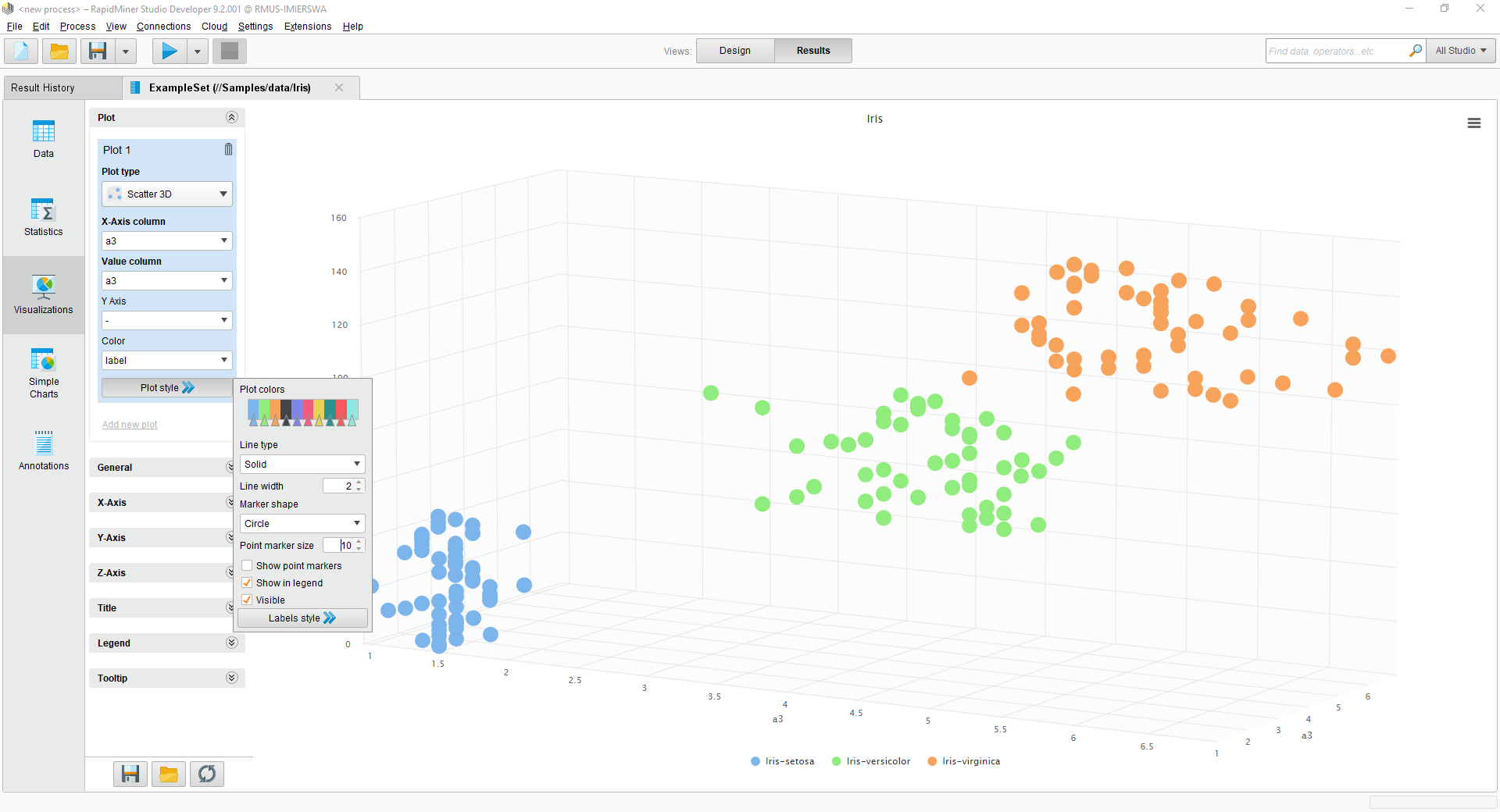

Rapidminer studio visualization software#
This post is part of a series in which I reflect on my experiences as a first-time explorer of various pieces of learning analytics and data mining software applications. Scratch) useful for novices to turn complex statistical processes into simple, graphical blocks – however knowledge of these processes is still required. This seems similar to the block-like approaches used to teach programming to children (e.g. However, as a ‘visual learner’ (if there is such a thing…) I found that RapidMiner’s approach to visualizing the components of a predictive model to be quite helpful. Figure 5 – A model constructed using sub-processes Figure 6 – Output of the above model with sub-processes Closing ThoughtsĪs was the case with DSS, my familiarity with predictive modelling is relatively weak, therefore I found myself following the procedures of the tutorial without necessarily fully understanding the underlying statistical processes I was performing. I also tried running a model that contained sub-processes (see Figure 4 and Figure 5). Figure 4 – Predictions from the first decision tree model are applied to the second data set (i.e. When this process was run, the second dataset (table) got a new column containing the model’s predictions (see Figure 3). Next, I created a decision tree model on the first dataset, and applied the results to a second dataset (called “Deals-Testset”). Figure 2 – Output of the decision tree process created in Figure 1 The results for the (very simple) model that I ran are shown in Figure 2. Results are shown under the “results” tab at the top right. Hitting the “play” button at the top runs the current process. Figure 1 – A simple decision tree process using the data set “Deals” When the model is ready, the final ‘output’ bubble is connected to the “result” bubble at the top-right hand side of the “process” workspace (see Figure 1). The next task is to connect the different steps in the process together using the input/output ‘bubbles’ on either side of the process icons. In this example, I chose a “modelling operator” (“decision tree”) and dragged it onto the process workspace. Subsequently, “operators” (built into the program) are chosen from the pane at the top-left. Once a data set is selected from the bottom left-hand menu bar, dragging it onto the “process” workspace turns it into an icon, becoming the first step in the “process.” For example, in Figure 1, I dragged a dataset called “Deals” onto the workspace. However, unlike DSS – which records scripts in a macro-like fashion – RapidMiner uses a visual approach to building and executing scripts. Like Data Science Studio (DSS), RapidMiner is used for generating predictive models.
Rapidminer studio visualization trial#
I first heard about RapidMiner from the “ Data Analytics & Learning” MOOC (Siemens, Gasevic, Baker, and Rosé, 2014).įor this evaluation, I installed a trial version of RapidMiner Studio (desktop software version) and performed the introductory tutorials.


 0 kommentar(er)
0 kommentar(er)
